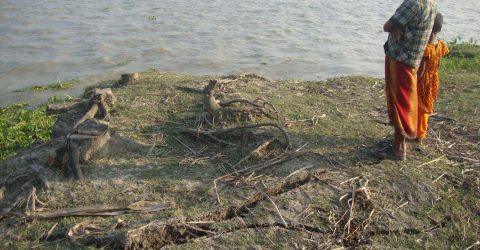
PUNTA CHAME, Panama, – They have never seen the ocean before, but, released gently onto the beach after hatching with human help, the baby sea turtles instinctively point themselves toward the waves. From Punta Chame beach on Panama’s Pacific coast, the critters then make a desperate 10-meter dash for the water that will house and feed them until they are ready to return to the same spot one day to breed.
“It is very common here in the village that people come at night to dig up the nests to eat the eggs or to sell them,” Pilar Crespo, who works at the Tortubanks nursery, told AFP. “That is why they are put in the nursery, for their own protection.” For about two months until the end of August each year, sea turtles arrive at Punta Chame to nest.
They are of the olive ridley variety listed as “vulnerable” by the International Union for Conservation of Nature. According to conservation group WWF, only about one in 1,000 turtles ever make it to adulthood. Many get caught up in fishing nets, or are killed by humans who covet their eggs, meat or shells. Once the mother turtles leave their nests, volunteers such as Crespo and her sixteen-year-old daughter Sofia Bistrain collect the eggs from areas exposed to predators and the elements.
They bring them to safety in replica nests in a protected, fenced area for the hatching season that starts in September. “We move the eggs depending on where the turtle lay them, whether it is safe or not. If the turtle places the nest in a place where it is not in danger, where the tide will not harm it in any way, it is … not touched,” the teenager told AFP.
The Tortubanks nursery took in 23 nests this season, with about 100 eggs in each. After about three months of supervised hatching, the babies are placed in baskets, brought to within about 10 meters of the waves, and released gently one by one onto the sand. The dozens of tiny reptiles dart immediately for the sea, as if called. They cannot be placed directly in the water, said Bistrain.
They must touch the sand first, to register where they are from, and to where they must one day return. Studies cited by the NGO Plastic Oceans International and the Sea Turtle Conservancy suggest that baby turtles learn the “magnetic signature” or coordinates of their home beach. When female turtles reach adulthood and are fertilized, they automatically return to their beach of origin to nest.




